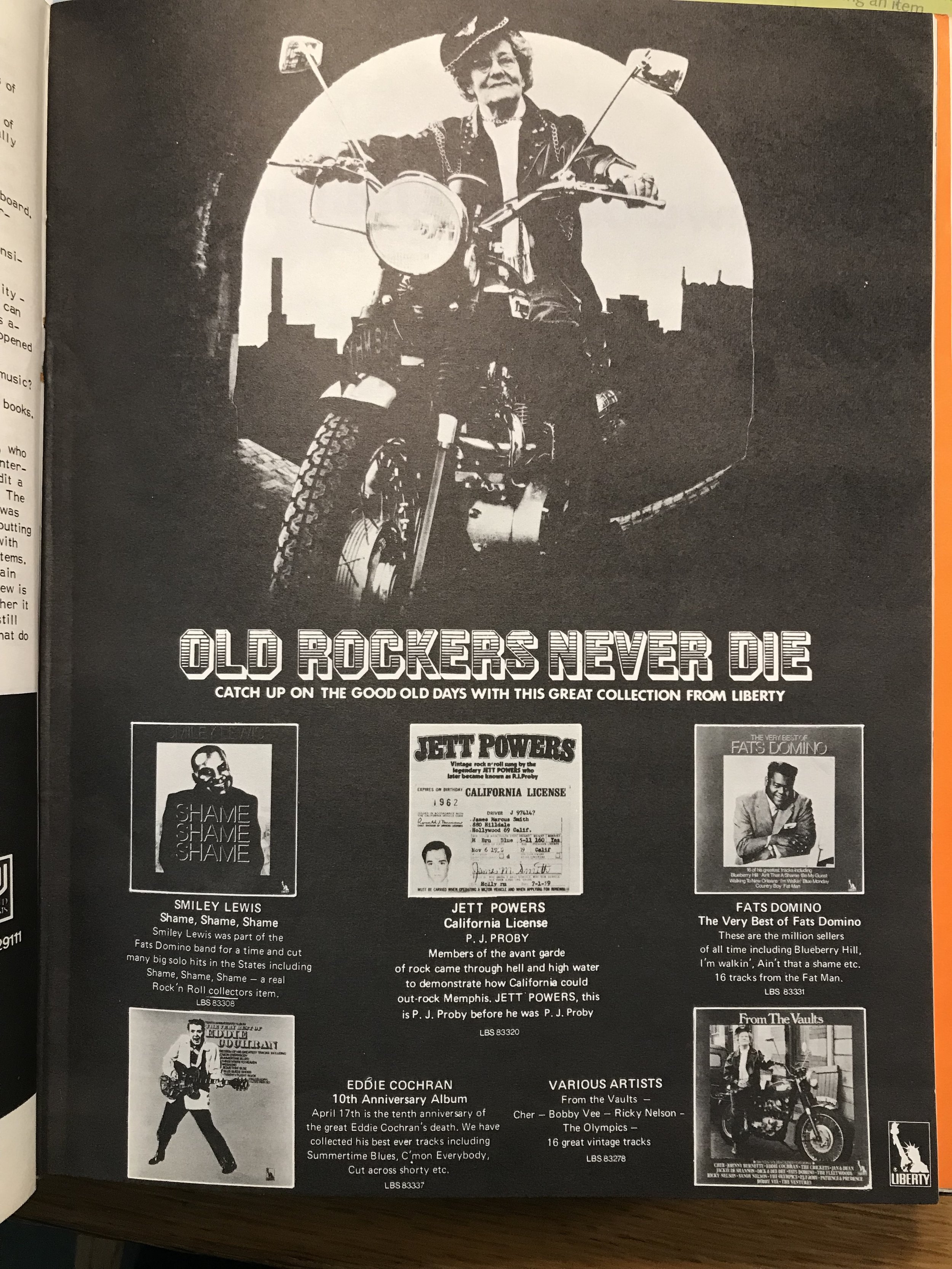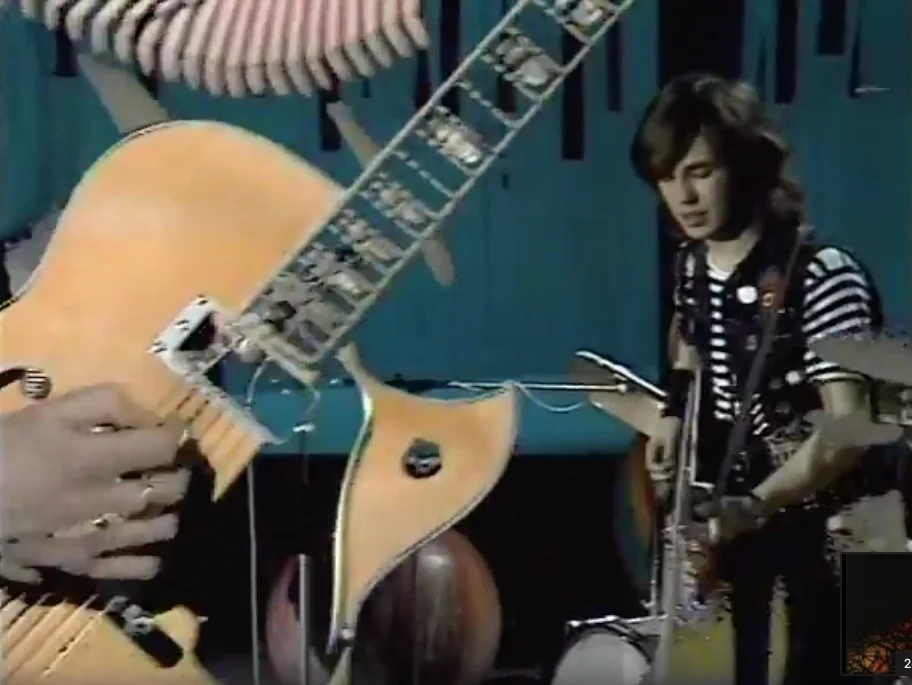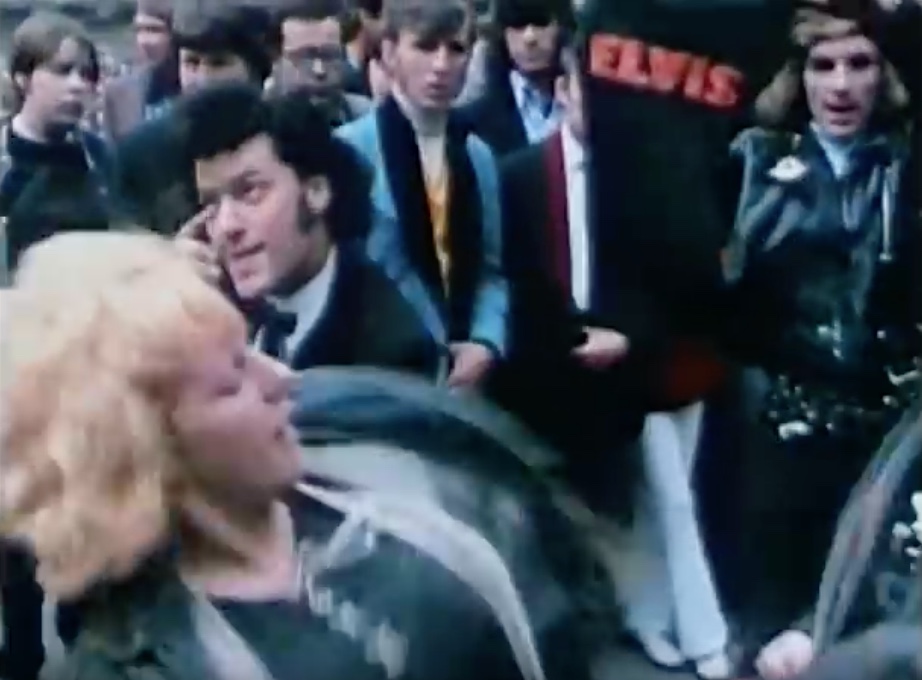Pete Frame, The Restless Generation: how Rock Music Changed The Face of 1950s Britain (2007)
1949–1959, the first ten-years of British pop music – the decade before The Beatles tore it up. The Restless Generation begins with jazz mavens Chris Barber and Ken Colyer, with side accounts of blues fanatics Alexis Korner and Cyril Davis before honing in on the caravan of skifflers that scuffled in the long parade behind Lonnie Donegan. Cutting across their tracks came Tommy Steele in his jukebox shaped charabanc. He brings in tow his own merry band of followers led by Larry Parnes’ circus of curiosities: Marty Wilde, Billy Fury, Adam Faith, Vince Eager, Duffy Power, Dickie Pride, Terry Dene, Joe Brown, Johnny Gentle, Georgie Fame and Julian X (the last named wholly new to me). This mad menagerie is eventually eclipsed by Cliff Richard calling all before him. Retelling their storied teenage lives, Frame recalls the countless trips around the streets and alleys of Soho; the idling intent and bursting ambition of the 2i’s patrons and the nights out at cellar clubs and pub backrooms. Bigger stages followed with package tours to provincial towns and pantomime shows that never ended. The monocular-eye of television beckoned with the ‘Six–Five Special!’, ‘Oh Boy!’, ‘Boy Meets Girls’ and ‘Jukebox Jury’; and films too beginning with The Tommy Steele Story (1957). Lurking in the margins are Tony Sheridan, Joe Meek, Big Jim Sullivan, Micky Most, Vince Taylor and Johnny Kidd and the Pirates. Through it all Decca, Philips, Oriole and the EMI stable released a slew of bad records, a deluge of dreadful imitations of American rock ‘n’ roll that made The Beatles an absolute necessity; the saving grace of British youth.
On two 10" inchers . . . where the restless generation made their recorded entrance
Though the subtitle suggests it is a social history, The Restless Generation is a chronological tale of the era’s singers and musicians, scene-makers and pace-setters’ early careers. Society and politics play a part in Frame’s story but they are way down the call sheet behind biographical detail, anecdote, and the evermore heaving list of temporary creative alliances. Following Gene Vincent and the Blue Caps, the second entry in Pete Frame’s Rock Family Trees was ‘Cliff and the Shads’, The Restless Generation expands exponentially on that genealogy, 440 glorious pages based on 80 interviews and a lifetime of collecting ephemeral data, and still I wanted more, or at least a photograph of Julian X.
Here’s a favourite passage with Larry and his boys being interviewed by Chris Chataway for the BBC’s ‘Panorama’ programme:
The reporter turned to the boys: ‘Do you feel manipulated?’ ‘Nah, not really: it all amounts to having faith in your manipulator.’ ‘Do people tell you that your manager is taking you for a ride, making a lot of money out of you?’ ‘Very often’. ‘When your audiences go hysterical and shout and scream, what do you think of that?’ ‘We love it’. As Chataway sat there, at a loss to understand why anyone should want to inhabit such a world, the class divisions fell open for all to see. Chataway, an Olympic athlete with a plum in his mouth and an honours degree from Magdalen College, Oxford, soon to become a Conservative member of Parliament; Parnes, a Jewish trader, nouveau riche; and a bunch of ill-educated working-class lads. The interviewer homed in on Johnny Gentle. ‘What do you do for amusement?’ he asked. ‘I date girls’. ‘Anything else?’ ‘Not really, no’.
Ace Records’ Rockin’ Again at the 2’i’s digs deep into the era’s record legacy. Great notes by Rob Finnis. They Called It Rock ‘n’ Roll has the Decca label hits
At the book’s best, Frame pulls together parallel stories and creates a finely tuned image of the music and the musicians:
Elvis cut ‘That’s All Right’ during his first Sun session on 5 July 1954. Eight days later, Lonnie cut ‘Rock Island Line’. Elvis was 19; Lonnie was 23. Elvis had grown up with a rich diversity of music on the radio, surrounded by rednecks, rustics and blacks, a stone’s throw from the Mississippi River. Lonnie had grown up in East London, hearing only a smattering of black music on AFN and on records at the houses of friends. Elvis took ‘That’s All Right’, a 1947 song by black blues-man Arthur ‘Big Boy’ Crudup, and not only personalised but took it to another planet. Lonnie did the same on ‘Rock Island Line’, which he had learned from a 1942 recording by Leadbelly. The same propulsive acoustic rhythm guitar, same string bass driving it along, same souping-up of the original tempo, same sense of urgency and passion. Elvis had a warm, good-old-boy, sultry southern sexiness to his voice; Lonnie sang with a high lonesome nasal whine, a cross between East Virginny and East Ham. Both their styles had developed naturally, almost accidentally, born of admiration for earthy American roots music and uninfluenced by commercial considerations.
This passage is so vivid you don’t need to replay the two records back-to-back to hear whether or not he gets it right; agree with him or not, he has perfectly caught the spell both performers had almost simultaneously cast.
While others have told the history of this era, Rob Finnis and Spencer Leigh especially, no one has dealt with it in such loving and lengthy detail, yet something is still missing. While I’ll give anyone who proselytises on behalf of Billy Fury my time, the rest of the motley-crew arraigned here still feel at book’s end entirely interchangeable. I really couldn’t tell you what made Terry Dene different from Vince Eager or Johnny Gentle and, beyond The Sound of Fury and a handful of singles by Johnny Kidd and Vince Taylor’s ‘Brand New Cadillac’, I can’t see myself ever expending the time, enthusiasm and cash to discover more about the music the restless generation made. Nothing Frame writes here drives me toward digging for a lost 45. It’s not the fault of his writing, it’s just how risible he makes their records sound when compared to the originals. Chris Barber, early Lonnie Donegan, Alexis Korner, Cyril Davis they all have my ear, but Tommy Steele too quickly gave up rockin’ with the caveman to play alongside Widow Twankey and a ‘Little White Bull’.
Even disregarding the bad records, something is still lacking; an absent presence that haunts Frame’s tale. The story it seems to me is Larry Parnes, but once again he is principally portrayed as a predator of young men (even in that endeavour he mostly fails to seduce his charges, if you believe what Frame is told). Parnes’ lack of any genuine appreciation of rock and roll, such as that Brian Epstein or Kit Lambert would acquire, further condemns him. In Frame’s tale he’s a shyster and exploiter of talent, not an enabler but someone who staunches the flow of hot blood, cools the sweat, and washes away the grease and grime with pink Camay soap and wraps his stars in cellophane. Parne rubs off their rough edges and tames their wild ways; a process of emasculation that readies them for the variety and pantomime circuit. This may all be true, but Parnes is here sketched in such a shadowy fashion I can’t help but feel his story is yet to be told.
It is a story that will need to go beyond his sexuality; it would take into account a history of East End Jewish participation in the entertainment industry; give more attention to the death of the variety show, the continued importance of pantomime and the rise of the package tour. If you wanted a little theory in the mix it could play with the concept of a Warholian transposability of stars, or the shifting shape of post-war British masculinity. Most importantly, it should raise questions around the packaging and marketing of pop that is not skewered by a writer’s love of rock ’n’ roll that is fixated on the male fan rather than the female consumer. That’s a book I’d hope Jon Savage or Caroline Sullivan would write. Whoever the speculative author, Pete Frame’s The Restless Generation will be their urtext, the book on which their endeavour would rest.






























